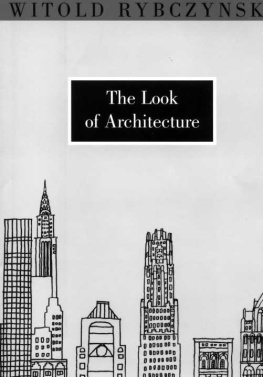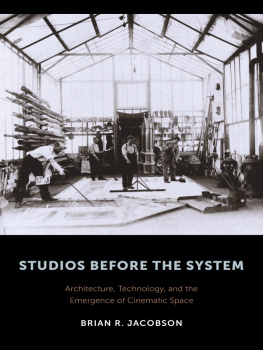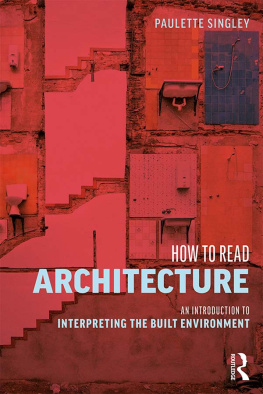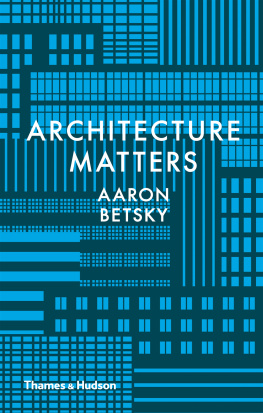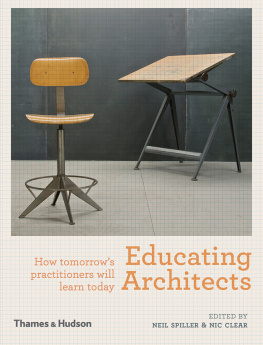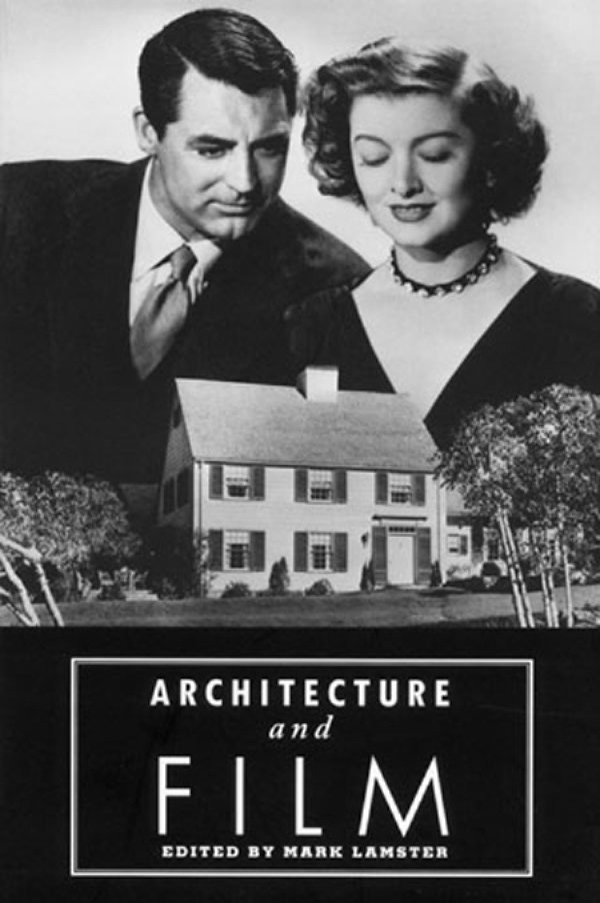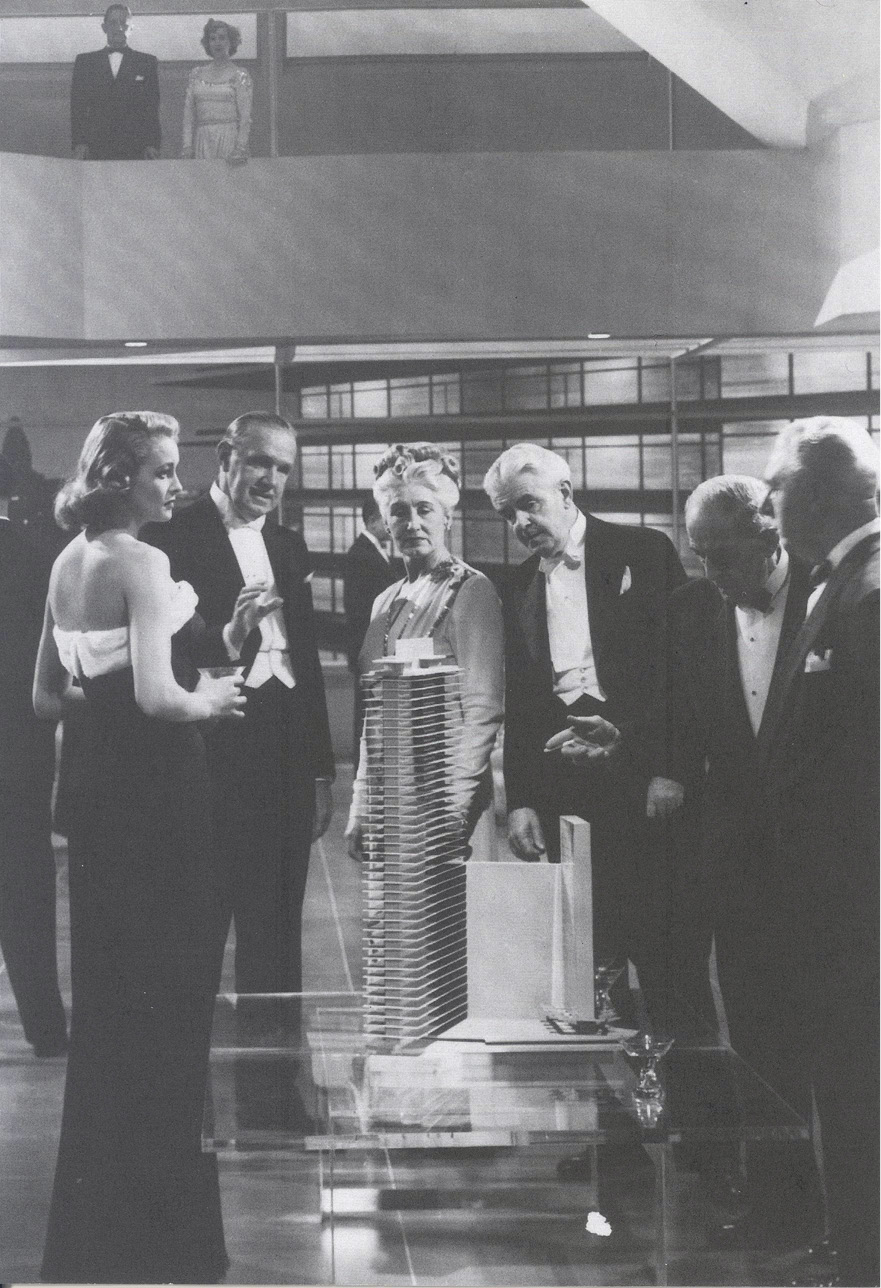Jonathan F. Bell
Partygoers inspect a model apartment tower in King Vidors The Fountainhead (1949).
INTRODUCTION
MARK LAMSTER
THE ARCHITECT AND the filmmaker have much in common. Their professions demand a combination of courage, determination, and hubris that allow them to impose a personal vision on an often unreceptive world. Both practice synthetic arts, where collaboration and compromise are rules rather than exceptions and where clients have financialif not creativecontrol. Orchestrators of complex productions, they require a supporting cast of able craftsmen who must carry out their tasks with creativity, intelligence, and practicality. If they dont, if a project fails to live up to expectations, the principal alone will take the blame. Conversely, it is the heroic auteur who will bask in the adulation of any grand success, the role players fading quietly into the penumbra. We should all know better.
Filmmakers, with the help of production designers, art directors, location managers, and countless other members of cast and crew, insert architecture into their films. On a practical level, architecture sets a scene, conveying information about plot and character while contributing to the overall feel of a movie. In more discreet ways, filmmakers can use their cameras to make statements about the builtor unbuiltenvironment, or use that environment to comment metaphorically on any of a variety of subjects, from the lives of the characters in their films to the nature of contemporary society. Architects, for their part, create not only the structures that appear in films but the structures in which films appeartheatersand the very infrastructure that supports the film industry.
As arguably the defining art form of the twentieth century, film has had a profound effect on both the way architects envision their work and the way the public consumes architecture. Today, we often hear of architecture that is cinematicthat is, theatrical in effect and thematic in nature; the vast hotels of Las Vegas, the new Times Square in New York, and the seemingly ubiquitous theme restaurants scattered across America are prime examples. The New Urbanist movement of planning and design finds its picket-fence paradigms in Hollywoods depictions of small-town America. Meanwhile, a number of avant-garde practitioners have sought more abstract inspiration from the medium of film, finding in its use of montage, sequential progression, and spatial composition devices applicable to their own work.
An examination of any one of these convergences would make fine fodder for a book in its own right. But that is not the intention here. Eschewing a narrowly focused theme or theoretical agenda, this collection seeks only to suggest a few of the many different ways to think about the entwined subjects of architecture and film, and to do so in a thoughtful and engaging manner. If there is a shared conviction among these writers, it is simply a commitment to both architecture and film along with the belief that these two art forms exert a profound influencesometimes positive, sometimes noton the way we live.
This book is divided into three parts. The first, Architects on Screen, examines the depiction of architects in both fiction films and documentaries. Part II, Behind the Scenes, explores the process of creating on-screen architecture, focusing on the professionals who are responsible for putting it there and its effects on the way we perceive our environments. The essays in Part III, Visions of the World, show how filmmakers have used the built environment to reflect their ideas about the societies in which they live.
What better place to begin than with a look at the evolution of the on-screen portrayal of the architect? While researching her essay on this subject, Tall Buildings, Tall Tales: On Architects in the Movies, Nancy Levinson quickly realized that architects are few and far between in major motion picturesa reflection of the relative invisibility of the profession in the popular imagination, but also of the fact that the architectural career doesnt suggest the frisson of danger and crusading righteousness we have come to expect from doctors, detectives, politicians, spies, and even lawyers in the movies. The architects that filmmakers have created are almost invariably distorted characterizations, but, as Levinson writes, these distortions, like jagged views reflected by a cracked mirror, contain disconcerting shards of truth. Although on-screen architects have served predominantly as window dressingwell-appointed minor players, Renaissance men (they are always men) equally at home in the worlds of art and businessa handful of films have featured architects as primary characters. From The Fountainhead to Indecent Proposal , Levinson tracks the mystique of the profession over the course of a prolonged, downward trajectory from Messianic figure of prodigious creative and sexual vigor to impotent and lowly cog in a hollow consumerist economy.
How exactly did this come to pass? Philip Nobel explores this question in his essay, Who Built Mr. Blandings Dream House? He finds the answer in the reorganization and redefinition of the profession in the face of World War II. Nobel documents the vain attempts made by architects to contribute to the war effort, their rejection by a technocratic government that perceived them as mere aesthetes, and the subsequent corporatization of the architectural profession.
Documentary filmmaker Bob Eisenhardt addresses the portrayal of a particular architectand a major work of architectureon screen in his frank account of the production of Concert of Wills , a film that he edited. More than a decade in the making, this cinema verit chronicle of the marathon design and construction process of the Getty Center in Los Angeles is unique among documentaries about architecture. As Eisenhardt writes, The focus was on the actual process of making architecture, rather than the hagiographic treatment of client and architect typical of such films. Eisenhardt, who trained as an architect and received an Academy Award nomination for his 1983 film Spaces: The Architecture of Paul Rudolph , suggests that the process of making a film is, in fact, quite similar to that of constructing a building.
The inherently collaborative nature of filmmaking is a fact that is made explicit at the close of every movie, when a seemingly endless stream of cast and crew names scrolls up and off the screen. Nevertheless, we often forget that there are professionals besides the director who are responsible for the look of a film. Part II begins with appraisals of two such figures, the art directors Cedric Gibbons and Ken Adam. Though Gibbons career was coming to a close just as Adams was beginningindeed, Adam is still working todayand their personal histories and stylistic proclivities are wildly divergent, both not only gave shape to the individual films on which they worked, but influenced countless others.



